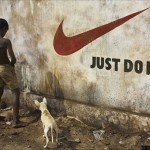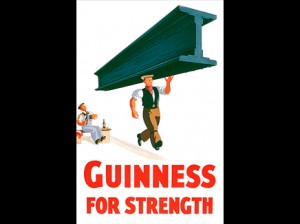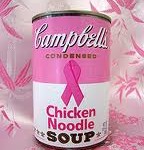Remember around 1995, when all of a sudden the social conscience of the world seemed to explode in a wave of pre-millennial guilt? That was when Nike, global athletic wear brand, came under a harsh spotlight for allegations regarding its labour abuses in overseas countries. Images such as the one shown below ran rampant:
The interesting thing about this public reaction was that Nike was not alone in outsourcing its labour and paying peanuts for wages. Many other manufacturers, those of clothing especially, saw in the rise of cheaper global transport an opportunity to cut costs. It is likely that Nike came under such harsh criticism initially due to its strong position as an industry leader and a well-established brand, especially one with humble, ‘of the people’ origins. However, once this snowball of criticism had started, ordinary consumers found themselves caught up in protests and boycotts that shook Nike’s brand value around the globe.
And then, what happened? Nike is currently an extremely popular brand, and through the years it has expanded its offerings beyond simply athletic clothing to include a women-specific apparel line and many lifestyle pieces, most recently focusing on hip-hop apparel and shoes. In doing so, Nike has solidified its role as a leader, both in its original field and in apparel industries beyond this. Although there are still some individuals who bring up sweatshops as a sticking point when refusing to purchase Nike apparel, the bulk of consumers (at least the observable ones) in Nike’s target markets seem to have forgotten this unfortunate incident, or at least find Nike’s new offerings more favourable than a boycott at this point. I am an example of this; although I consider myself to be socially responsible, one of my favourite pairs of shoes is a pair of Nike hightops.
Yes, it is true that Nike made commitments to improve working conditions. Yes, they did employ more transparency methods in their manufacturing processes, and begin a Nike Corporate Responsibility handbook. But many of these issues, while somewhat addressed, were not solved and still exist to this day. 44cent wages and cramped spaces still exist, as they do in the factories of many firms. It’s almost as though we’ve stopped caring…
But I don’t think that’s it. We just care about our shoes more.
















